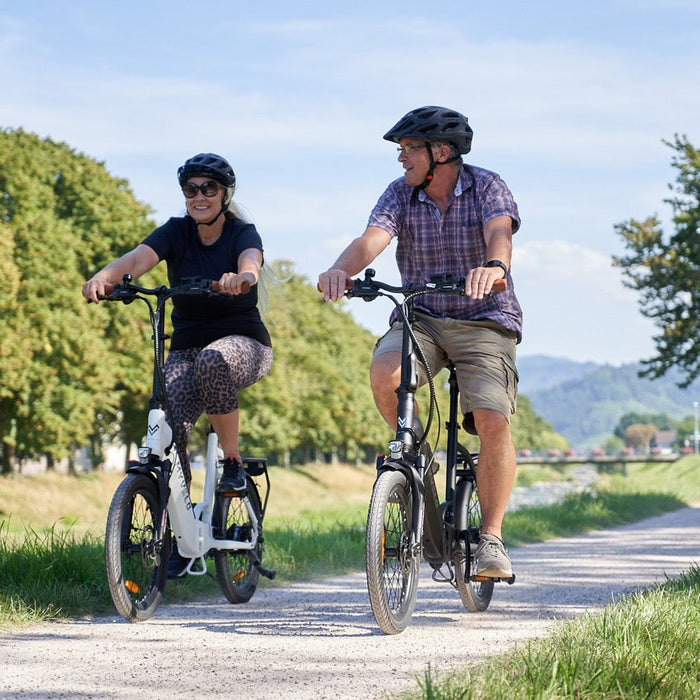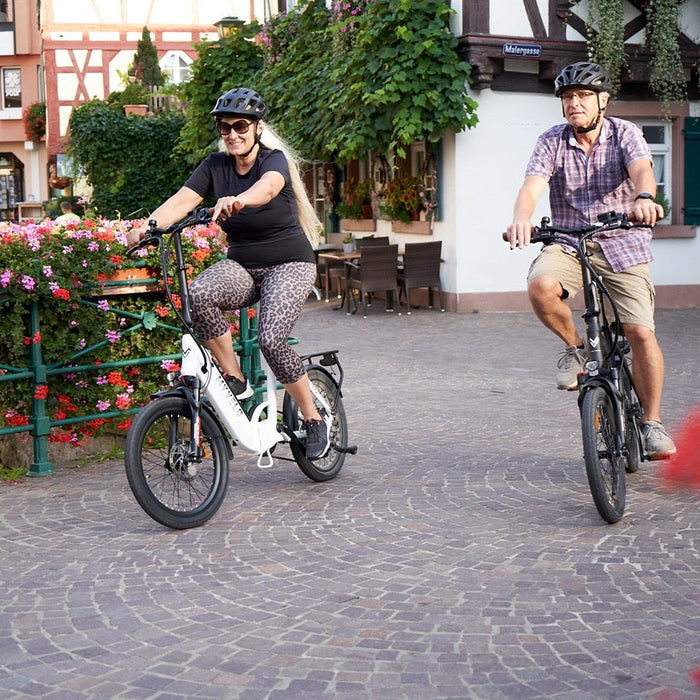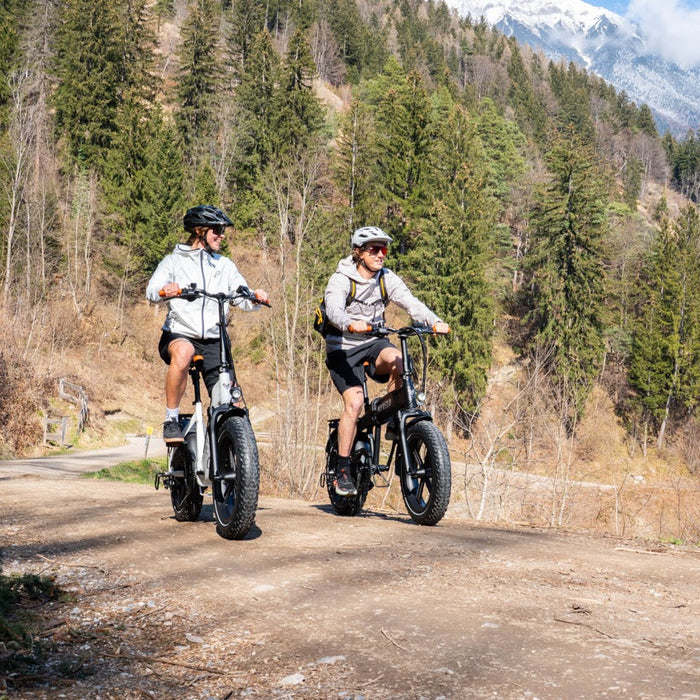
Ipanema electric folding bike
incl. FREE shipping & free returns
Ready for dispatch immediately, delivery time 2-3 days.

The Road Traffic Regulations, or StVO for short, are the heart of German traffic rules. They define how participants should behave in road traffic to ensure safety and the flow of traffic. From speed limits and parking to right-of-way rules and behavior in the event of an accident - the StVO covers a wide range of traffic situations. Its aim is to create order on the roads and minimize conflicts between road users. The sections that deal with cycle paths, riding next to each other and overtaking distances are particularly relevant for cyclists. The StVO is regularly adapted to new traffic developments and findings in order to ensure a high level of road safety.
The StVO is particularly important for cyclists as it contains specific rules and regulations for cycling on public roads. Some of the most important provisions for cyclists in the StVO include:
Choice of lane: Cyclists must generally use cycle paths if available. If there is no cycle path, they may use the cycle lane on the road. If this is not possible, they may use the right-hand side of the road or the right-hand shoulder.
Turning: Cyclists must use appropriate hand signals when turning to indicate their intentions.
Lights are mandatory: In the dark or in poor visibility conditions, cyclists must have functioning lights on their bicycles.
Alcohol and drugs: The same blood alcohol limits apply as for car drivers. Riding a bike under the influence of alcohol or drugs is prohibited.
Traffic signs: Cyclists must obey traffic signs that apply specifically to them, such as bicycle traffic lights or bicycle crossings.
Direction of travel and oncoming traffic: Cyclists must ride in the direction of travel on the right-hand side of the road. Riding against the direction of travel is generally not permitted.
Mobile phone ban: Making phone calls or using a mobile phone while riding is prohibited for cyclists.
It is important that cyclists know and follow the road traffic regulations to ensure their own safety and the safety of other road users. In addition, violations of the road traffic regulations can be punished with fines.

Stress ist längst zur Volkskrankheit geworden – Dauerbelastung im Job, private Verpflichtungen und ständige Erreichbarkeit führen bei vielen Menschen zu einem Gefühl der Überforderung. Doch es gibt einen einfachen Weg, den Kopf freizubekommen: Radfahren. Ob gemütlich durch den Park oder sportlich auf dem Rennrad – das Fahrrad wirkt wie ein natürliches Ventil für Stress. Warum das so ist, zeigt dieser Artikel.

Der Kettenverschleiß ist bei E-Bikes ein noch wichtigeres Thema als bei klassischen Fahrrädern. Der leistungsstarke Motor unterstützt die Pedalkraft, wodurch eine höhere Belastung auf die Kette wirkt.

Der Eco Modus ist eine der wichtigsten Unterstützungsstufen eines E-Bikes und bietet eine ideale Balance zwischen Motorunterstützung und Energieeffizienz. Doch was genau bedeutet Eco Modus, wann sollte man ihn nutzen und welche Vorteile bringt er im Alltag? In diesem Artikel erfährst du alles Wichtige über diese smarte Fahrstufe.